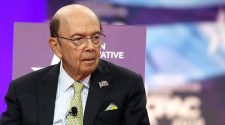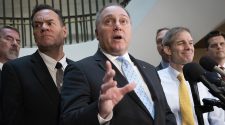MINNEAPOLIS — The calls for sweeping reforms to policing that have reverberated since the death of George Floyd slammed into the messy realities of lawmaking on Friday, offering a glimpse of the uncertainties of turning protest into policy.
Nearly a week after nine members of the Minneapolis City Council made a drastic pledge to take apart the Police Department, the council took its first steps on Friday in a slow, complicated process that could eventually lead to shifting funds from the city police. But that process will last for more than a year and require voters to actually approve of removing the Police Department from the city’s core departments.
And in the State Capitol, an ambitious package of police reforms proposed by Democrats faced an uncertain future as Republicans who control the State Senate said they would oppose some of the most far-reaching changes, such as restoring voting rights to felons or putting the state’s attorney general, rather than local prosecutors, in charge of prosecuting killings by the police.
Republican leaders said they would support five less contentious measures, including banning chokeholds and providing more money for “de-escalation” training. Democrats said the Republicans’ proposals fell short of the fundamental changes that tens of thousands of people have demanded in how the police treat black men and women and other people of color.
“We should do the work that the people have demanded that we do,” Melissa Hortman, speaker of the Minnesota House and a Democrat, said in an interview.
There is not much time for finding common ground. As a special session got underway on Friday to address policing, the economy and the coronavirus, leading Republicans said they hoped to wrap up all of their work by the end of next week.
“We’re not going to stay in special session for months and months,” State Senator Paul Gazelka, the Republican majority leader, said at a briefing on Friday. “We’re going to do the things we can do now.”
It was a sobering reality check for Democrats who have embraced activists’ calls for transformative changes that include going as far as cutting the budgets of local police departments or drastically rethinking how the police interact with people in their communities.
“This is not what Minnesotans of all persuasions are asking us to do,” said State Senator Jeff Hayden, a Democrat whose district includes the Minneapolis neighborhood where Mr. Floyd died after a white police officer pressed his knee into his neck for nearly nine minutes.
Still, police departments, cities and states across the country have already made a flurry of changes after the upheaval, including re-examining police budgets, banning chokeholds and removing officers from schools.
On Friday, Gov. Andrew M. Cuomo of New York signed a broad package of bills aimed at combating police brutality. Some of the bills had languished for years in the face of opposition from police unions. The bills included a ban on the use of chokeholds as well as the repeal of a decades-old statute that had allowed the police to keep disciplinary records of officers secret.
But while Minnesota has become ground zero for protests, it is also showing the enduring obstacles facing the overarching changes many activists are demanding, especially in a 2020 battleground that is the only state in the nation where Democrats and Republicans each control one of the two legislative chambers.
While Democrats and liberal activists are leading the calls for change on the streets of American cities, many state governments are controlled by Republicans who back law enforcement and are leery of proposals to defund police departments or make it easier to sue officers. Polling is showing support for many reforms but widespread opposition to defunding the police, a term that can mean different things in different cities.
Reform efforts in Washington face similar challenges after Democrats unveiled a sweeping bill this week aimed at addressing racial bias and the overuse of force in policing.
In Minneapolis, the City Council’s move to reduce the role of the Police Department was hailed by activists as a transformational change and condemned by conservatives as a lurch toward lawlessness.
“It seems like people have been asking for these changes for a long time,” Mr. Reyes, 35, said in an interview, “and it wasn’t until just the last couple of weeks that people are starting to look and listen a little bit.”
On Friday, Minneapolis’s efforts to alter policing in the city appeared mostly to be a slow, governmental grind. To achieve its aims of dismantling the Police Department as it currently exists, the City Council plans to ask voters to approve rewriting a section of the City Charter to eliminate a provision that dictates a minimum number of police officers. That change would give council members much more flexibility to divert funds to mental health and other agencies that could respond to calls traditionally handled by the police.
The ballot initiative would also include removing the Minneapolis Police Department from the charter — although not necessarily abolishing it altogether — and adding a new department “focused on cultivating public safety.”
The City Council also voted unanimously, at its virtual meeting, on a resolution to commit to a yearlong effort to research other models of public safety and to listen to what residents say they would like to see.
Andrea Jenkins, the vice president of the City Council, said the world was looking to Minneapolis to see how it would respond after the killing of Mr. Floyd last month.
“People have marched all over the world, all over the city of Minneapolis, and what they’re saying to us is they want change,” Ms. Jenkins said. “Not ‘fix it,’ not reform, but change. So we must take these voices seriously.”
The resolution passed on Friday creates a “Future of Community Safety Work Group” that will soon begin listening to residents, interviewing experts and studying other models of public safety to determine how various city services could replace many of the Police Department’s current functions.
Alondra Cano, the chairwoman of the public safety committee, said in an interview after the vote that the engagement of city residents would be vital to determining the right solutions for public safety in Minneapolis.
“The beauty of this project is that the answers come from the community, that collectively, the future of this city will be decided by the people who live here,” Ms. Cano said.
She added that the initiative to get rid of the City Charter’s requirement that the Police Department have .0017 employees per city resident would remove a large hurdle that stands in the way of redirecting funds from the police to violence prevention programs and other city agencies. If the initiative does get on the ballot in November, it would require a majority of voters to pass.

















